An evolution of Volkswagen’s most potent hatch; the Golf R
This year marks the 20th anniversary of Volkswagen’s high-performance R sub-brand launched in 2002, here’s how the Golf R has evolved since the first MK IV to wear the iconic moniker.
Ever since the introduction of the GTI over 25 years ago, the Volkswagen Golf range has featured a string of performance-oriented models.
Golf IV R32
The Volkswagen Golf IV R32 continued this tradition but turned performance to 11. With a potent 3,2-litre V6 petrol engine, this is one of the most powerful production Golfs ever built, as well as one of the most distinctive. Its narrow-angle 24-valve powerplant produces 177 kW of power and 320 N.m of torque. The IV R32 has a maximum speed of 246 km/h and will sprint from a dead stop to 100 km/h in 6,4 seconds.
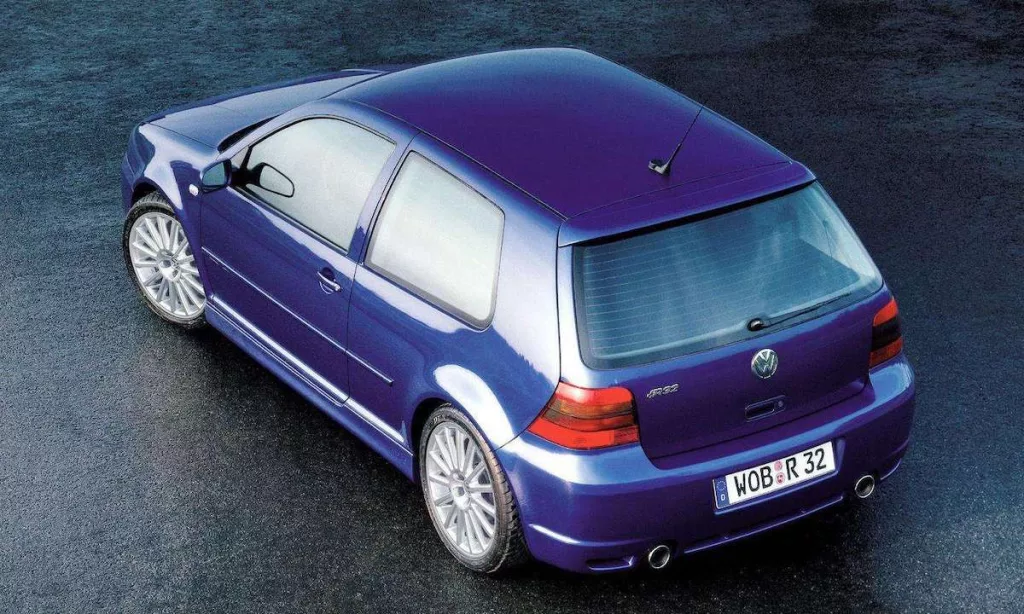
Image: Volkswagen
In terms of appearance, there is no mistaking the VW Golf R32 from its demure counterparts. Visual cues include new front and rear bumpers, side sills, blue brake callipers and 18-inch Aristo alloy wheels, while silver ‘R32’ badges take pride of place on the grille and tailgate. Released in 2002, the forefather of R models already featurs a timeless design that still draws appeal 30 years later.
Golf V R32
After the IV R32 set the tone for where the brand was going, Volkswagen launched the Golf V R32 in 2005 which became the most powerful and fastest production Golf at the time. The Volkswagen Golf V R32 is based on the standard Golf, meaning its design and dimensions are near identical. However, its new nose design and lowered suspension mean there are small differences such as a 20 mm height reduction and length increase of 42 mm. The next second edition R32 followed the successful formula laid down by the previous R32 and in doing so, established itself at the top of the Golf range, above the already highly acclaimed GTI.
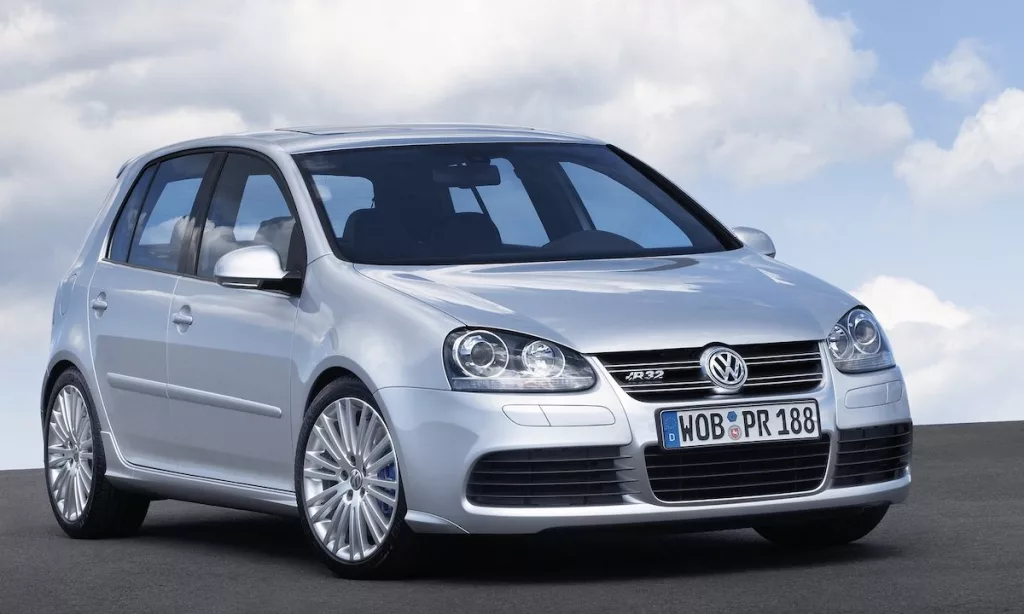
Image: Volkswagen
Under the bonnet, you would find a 3,2-litre V6 naturally aspirated engine that produces 184 kW of power and 320 N.m of torque. Volkswagen paired it with a six-speed manual as the only transmission option and sent the power in all corners via an active centre differential system. The Golf IV R32 has a maximum top speed of 250 km/h, going from 0-100 km/h in 6,2 seconds.
Golf VI R
The sixth generation R line was designed by Walter Da Silva and officially debuted in 2009. Like the first two generations of the Golf R, the sixth generation of the Golf wearing the moniker also sports a completely modified set of exterior and interior features. Volkswagen designers, led by Klaus Bischoff, have given the Volkswagen Golf R an bespoke aesthetic with a bundle of well-coordinated refinements. The Volkswagen Golf R unmistakably marks the peak of the model series.
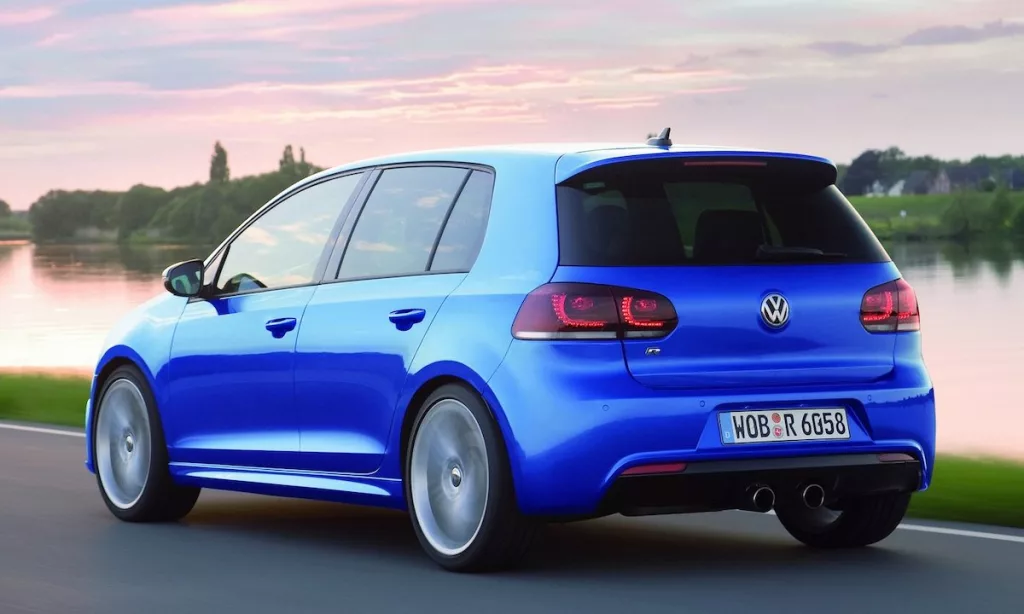
Image: Volkswagen
For the first time, the German carmaker installed a highly tunable in-line four-cylinder 2,0-litre turbocharged petrol engine that produces 199 kW of power and 350 N.m of torque. With a top speed of 249 km/h, the VI R will sprint from 0-100 km/h in 5,5 seconds. As standard equipment, the Volkswagen R transfers the TSI’s power to the road via the 4Motion all-wheel-drive system through a 6-speed automatic transmission.
Golf VII R
When this specific model was launched, we were already in the golden era of hot hatches. Volkswagen introduced the high-performance Golf R with the seventh generation of the best-selling hatchback and it quickly established itself as one of the best all-rounders in the market.
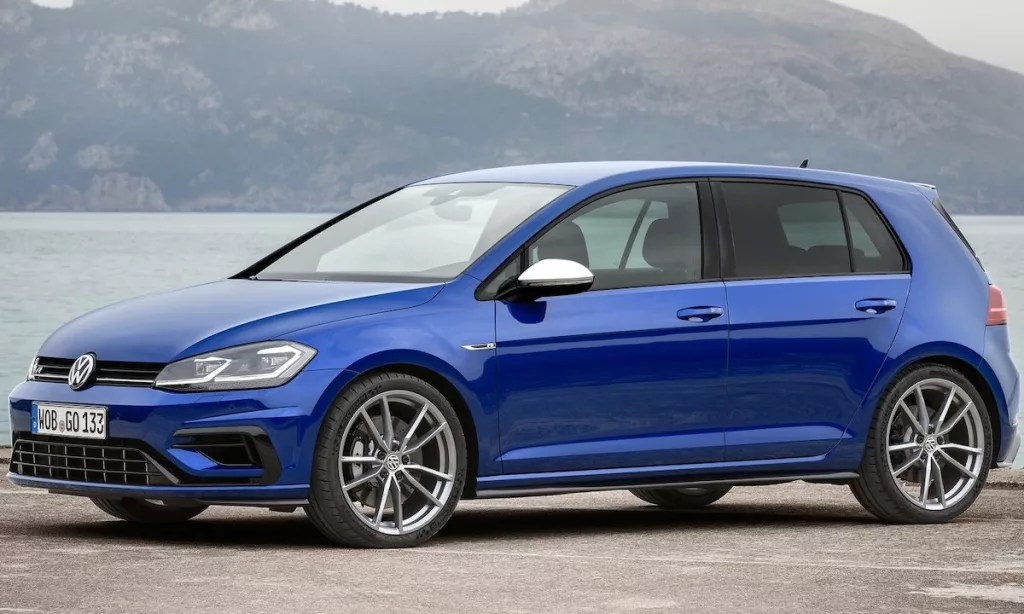
Image: Volkswagen
Featuring newly designed bumpers, LED headlights and LED tail lights that create a design that takes on an even more dynamic look. The tailpipes are placed further out to the sides this gives the car a wider appearance. At its sides, the Volkswagen Golf R has upgraded exterior mirror caps in Chrome Matt or optionally in Gloss Black or Carbon and various 18-inch and 19-inch wheel choices.
Power comes courtesy of a 2,0-litre turbocharged four-cylinder petrol engine offering up 228 kW of power and 380 N.m of torque that comes as standard with a seven-speed Direct Shift Gearbox, sending power to all four wheels. The Golf 7 R has a top speed of 250 km/h and will sprint from 0-100 in 4,6 seconds.
Golf VIII R
When the time arrived for the local introduction of the eighth-generation Volkswagen Golf range, the lineup had been cut to only two performance-oriented variants: the 180 kW GTI, which arrived in the third quarter of 2021 and now the highly anticipated 235 kW Golf R.
WATCH: Golf R “20 Years” becomes the fastest of its kind to lap the Ring
Offering an increase in performance, better handling, more standard equipment and improved tech from its predecessors, the latest iteration of the hyper hatch to wear the R badge is undeniably the ultimate. Under the Golf R’s bonnet is a turbocharged 2,0-litre inline-four-cylinder that makes 235 kW of power and 400 N.m of Torque, sending power to all four wheels through a 7-speed dual-clutch automatic gearbox. The new R has a top speed of 250 km/h but that number can be pushed to 270 km/h if you include a performance pack. From a dead stop, the new R will sprint to 100 km/h in 4,8 seconds.
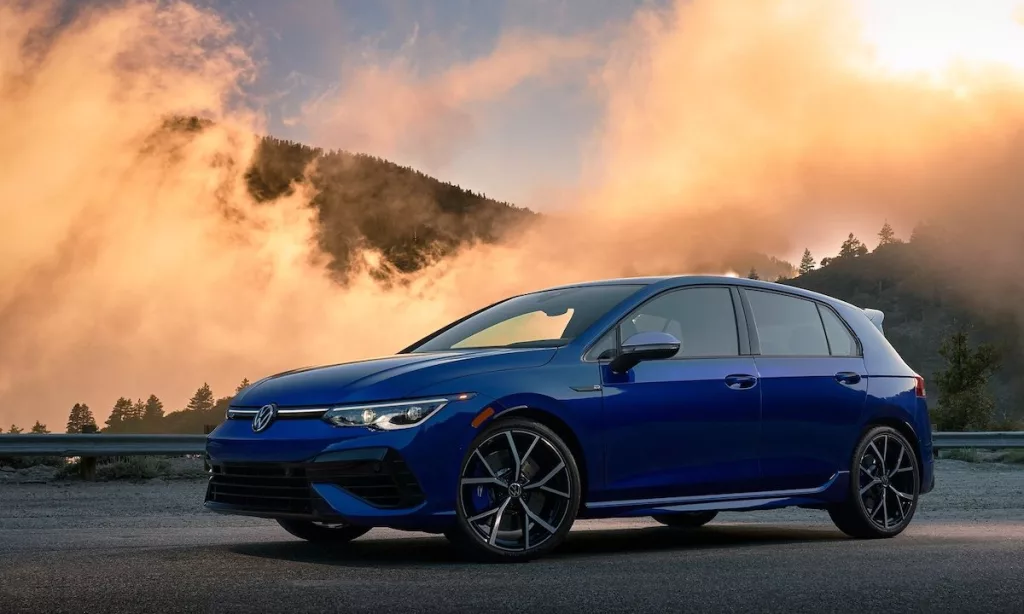
Image: Volkswagen
Slightly longer, it still carries the styling hallmarks of its predecessors, such as the distinctive C-pillar. New LED headlights and an available light bar that runs seamlessly across the grille. Also featuring a new wheel design, more aggressive front and rear bumpers and diffusers than on GTI, a large two-piece rear spoiler, body-coloured side sill extensions, and a quad-tipped exhaust system.
Earning a fierce reputation on the CAR Performance Shootout, read all about the latest hyper-hatch from Volkswagen in the January issue.
The Volkswagen Golf is a phenomenon, regardless of its particular generation. Ever since the first Golf R32 was introduced, it has been no secret that the all-wheel drive Golf R is a sports car that also impresses in everyday driving. What is fascinating, is how the R concept has been transferred to an estate model to create a new combination of space and race qualities and they absolutely nailed it.
The post An evolution of Volkswagen’s most potent hatch; the Golf R appeared first on CAR Magazine.
The Car Guide
Comments
Post a Comment